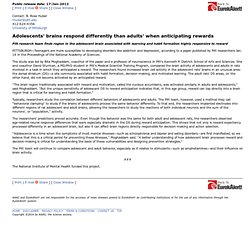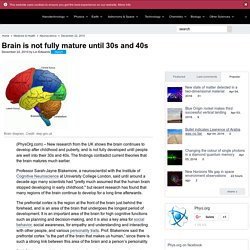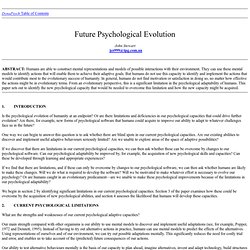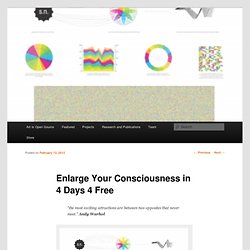

Notre cerveau, le fruit d'un travail d'équipe? Représentation du cerveau humain Photo : iStockphoto Les humains ont un gros cerveau probablement en raison de l'esprit coopératif qu'ils ont développé au cours de l'évolution.

La comparaison du cerveau de l'Homo sapiens avec celui de ses prédécesseurs hominidés mène à un constat clair : l'organe humain fait figure de géant, particulièrement en raison de ses méninges particulièrement développées. Or, les scientifiques n'ont jamais réussi à expliquer pourquoi le cerveau avait évolué de la sorte. Le chercheur irlandais Luke McNally, du Trinity College, et des collègues écossais estiment que l'explication pourrait bien résider dans un simple fait : l'humain a eu besoin de coopérer pour survire.
Ainsi, son cerveau a donc dû s'adapter et grossir pour se retrouver dans la complexité des relations sociales. Les chercheurs estiment que le travail en équipe et la puissance cérébrale se stimulent l'un l'autre. Le détail de ces travaux est publié dans la revue Proceedings of the Royal Society B. Adolescents' brains respond differently than adults' when anticipating rewards. Public release date: 17-Jan-2012 [ Print | E-mail Share ] [ Close Window ] Contact: B.

Rose Huberrhuber@pitt.edu 412-624-4356University of Pittsburgh PITTSBURGH—Teenagers are more susceptible to developing disorders like addiction and depression, according to a paper published by Pitt researchers Jan. 16 in the Proceedings of the National Academy of Sciences. The study was led by Bita Moghaddam, coauthor of the paper and a professor of neuroscience in Pitt's Kenneth P. "The brain region traditionally associated with reward and motivation, called the nucleus accumbens, was activated similarly in adults and adolescents," said Moghaddam.
Typically, researchers study the correlation between different behaviors of adolescents and adults. Brain is not fully mature until 30s and 40s. (PhysOrg.com) -- New research from the UK shows the brain continues to develop after childhood and puberty, and is not fully developed until people are well into their 30s and 40s.

The findings contradict current theories that the brain matures much earlier. Professor Sarah-Jayne Blakemore, a neuroscientist with the Institute of Cognitive Neuroscience at University College London, said until around a decade ago many scientists had "pretty much assumed that the human brain stopped developing in early childhood," but recent research has found that many regions of the brain continue to develop for a long time afterwards. The prefrontal cortex is the region at the front of the brain just behind the forehead, and is an area of the brain that undergoes the longest period of development.
Prof. Blakemore said brain scans show the prefrontal cortex continues to change shape as people reach their 30s and up to their late 40s. Explore further: Study: Our brains compensate for aging. The Alignment System. A creature's general moral and personal attitudes are represented by its alignment: lawful good, neutral good, chaotic good, lawful neutral, neutral, chaotic neutral, lawful evil, neutral evil, or chaotic evil.

Alignment is a tool for developing your character's identity. It is not a straitjacket for restricting your character. Dimensions-du-cerveau-et-niveaux-de-conscience-1024x748.jpg (Image JPEG, 1024x748 pixels) Unification of Science and Spirit: Chapter 6 - MIND AS A COMPLEX SYSETM. Chapter 6 Among my many memories of early childhood, a few stand out with particular vigor.

First and foremost, there is Neil Armstrong walking on the moon -- this was around the time of my second birthday, but I remember it as well as anything I've watched on TV since. I understood where the moon was -- way up in the sky -- and that this man, dressed in a funny suit, was walking on it, having just flown there in something faster than an airplane.
'Mind reading' brain scans reveal secrets of human vision. Courtesy of Fei-Fei Li Researchers were able to determine that study participants were looking at this street scene even when the participants were only looking at the outline.

Researchers call it mind reading. Brain. Welcome to the pycortex WebGL MRI viewer!

Penn Medicine News: Deciphering Hidden Code Reveals Brain Activity. PHILADELPHIA – By combining sophisticated mathematical techniques more commonly used by spies instead of scientists with the power and versatility of functional magnetic resonance imaging (fMRI), a Penn neurologist has developed a new approach for studying the inner workings of the brain.

A hidden pattern is encoded in the seemingly random order of things presented to a human subject, which the brain reveals when observed with fMRI. The research is published in the journal NeuroImage. Geoffrey K. Aguirre, MD, Assistant Professor of Neurology at the Perelman School of Medicine, says “the same math that could break into your car can be used to crack the brain’s codes.” It’s called a de Bruijn sequence, which is a set or “alphabet” of things (letters, pictures, sounds) in a cyclic order such that every possible “word” or combination of things occurs only once. FUTURE PSYCHOLOGICAL EVOLUTION. DynaPsych Table of Contents Future Psychological Evolution John Stewart jes999@tpg.com.au ABSTRACT: Humans are able to construct mental representations and models of possible interactions with their environment.

They can use these mental models to identify actions that will enable them to achieve their adaptive goals.
SecondaryEmotions_full.jpg (Image JPEG, 800x1035 pixels) - Redimensionnée (77%) 23_hochformat4.eps - Robert-Plutchiks-PSYCHOEVOLUTIONARY-THEORY-OF-BASIC-EMOTIONS-.pdf. Enlarge Your Consciousness in 4 Days 4 Free. “the most exciting attractions are between two opposites that never meet.”

Andy Warhol EYCI4D4F Diagram 1 In this essay, we describe the ideas which led us to participate to the “Enlarge Your Consciousness in 4 Days 4 Free” project, together with Mezzapelle-Deriu. The mutation of the human being in contemporary times is characterized by drastic speed and by powerful, ubiquitous effects, which are transforming not only ourselves, but also the form and function of the whole planet, including the ways in which we learn, communicate, relate, work, think. And the ways in which we experience emotions. Art is Open Source has often dealt with the theories and practices of human emotion. Emotions are not “action”, yet they are the energy that creates action. List of emotions. The contrasting and categorisation of emotions describes how emotions are thought to relate to each other. Various recent proposals of such groupings are described in the following sections.
Contrasting basic emotions[edit] The following table,[1] based on a wide review of current theories, identifies and contrasts the fundamental emotions according to a set of definite criteria. ENLARGE_diagram3.png (Image PNG, 3000x2119 pixels) - Redimensionnée (37%) Wheellarge.png (Image PNG, 1733x1733 pixels) - Redimensionnée (45%)
Neuroscience of free will. Neuroscience of free will is the part of neurophilosophy that studies the interconnections between free will and neuroscience. As it has become possible to study the living brain, researchers have begun to watch decision making processes at work.
Findings could carry implications for our sense of agency and for moral responsibility and the role of consciousness in general.[1][2][3] Relevant findings include the pioneering study by Benjamin Libet and its subsequent redesigns; these studies were able to detect activity related to a decision to move, and the activity appears to begin briefly before people become conscious of it.[4] Other studies try to predict activity before overt action occurs.[5] Taken together, these various findings show that at least some actions - like moving a finger - are initiated unconsciously at first, and enter consciousness afterward.[6] A monk meditates.
Overview[edit] Evol_Anthrop_6.pdf (Objet application/pdf) Scientists construct first map of how the brain organizes everything we see. Our eyes may be our window to the world, but how do we make sense of the thousands of images that flood our retinas each day? Scientists at the University of California, Berkeley, have found that the brain is wired to put in order all the categories of objects and actions that we see. They have created the first interactive map of how the brain organizes these groupings. Maps provide "most detailed look ever" at how the brain organizes visual information. How does our brain organize the visual information that our eyes capture? Researchers at the University of California, Berkeley, used computational models of brain imaging data to answer this question and arrived at what they call “continuous semantic space” – a notion which serves as the basis for the first interactive maps showing how the brain categorizes what we see.
The data on which the maps are based was collected while the subjects watched movie clips. Brain activity was recorded via functional Magnetic Resonance Imaging (fMRI), a type of MRI that measures brain activity by detecting related changes in blood flow. In order to find the correlations in the data collected, the researchers used a type of analysis known as regularized linear regression. Russell Foster: Pourquoi dormons-nous ?
Théorie des intelligences multiples. Un article de Wikipédia, l'encyclopédie libre. La théorie des intelligences multiples suggère qu'il existe plusieurs types d'intelligence chez l'enfant d'âge scolaire et aussi, par extension, chez l'Homme. Cette théorie fut pour la première fois proposée par Howard Gardner en 1983. Murray's psychogenic needs. In 1938 Henry Murray published Explorations in Personality,[1] his system describing personality in terms of needs. For Murray, human nature involved a set of universal basic needs, with individual differences on these needs leading to the uniqueness of personality through varying dispositional tendencies for each need.
In other words, specific needs are more important to some than to others. Frustration of these psychogenic (or psychological) needs plays a central role in the origin of psychological pain.[2] Murray differentiated each need as unique, but recognised commonalities among the needs. Behaviors may meet more than one need: for instance, performing a difficult task for your fraternity may meet the needs of both achievement and affiliation.
Knowledge. Knowledge is the perception of the agreement or disagreement of two ideas—John Locke (1689) BOOK IV. Of Knowledge and Probability. An Essay: Concerning Human Understanding. Creative Thinking Is a Specific Process That Can Be Replicated. 6 Insane Things Science Can Predict About You at Infancy. Why genius and madness are connected. Huit circuits de conscience. Un article de Wikipédia, l'encyclopédie libre. 8-Circuit Model of Consciousness. Understanding the Eight Jungian Cognitive Processes / Eight Functions Attitudes. The Fractal Brain Theory. Tools for a Better Future. Spirit Published on March 17th, 2013 | by Jason Louv.
Scientists discover previously unknown cleaning system in brain. The Eight Basic Scripts. Diane Benscoter on how cults rewire the brain. File:Plutchik-wheel.svg. Cancel Edit Delete Preview revert. Emotut.jpg (Image JPEG, 3650x3033 pixels) - Redimensionnée (26%) Emotions_thoughts.jpg (Image JPEG, 3229x2480 pixels) - Redimensionnée (31%) Emotion. Emotions.jpg (Image JPEG, 500x790 pixels) Mapping How Emotions Manifest in the Body - Olga Khazan.
Liberation psychology. What a Shaman See’s In a Mental Hospital. PsyArt: An Online Journal for the Psychological Study of the Arts. 25 Acts of Body Language to Avoid. How the Mind Works. Gifted People and their Problems. How walking through a doorway increases forgetting. This is (not) psychology. Neural balls and strikes: Where categories live in the brain. Théorie du cerveau triunique. La théorie du cerveau triunique. NatureofMind.jpg (1118x900) Archetypes: Find Your Archetype & Discover Yourself. The Primate Mind - Psychology. Links to hundreds of Psychology studies running on the internet. Archetypology - Branding with a Difference. Archetypes%2B001.jpg (Image JPEG, 400x324 pixels)